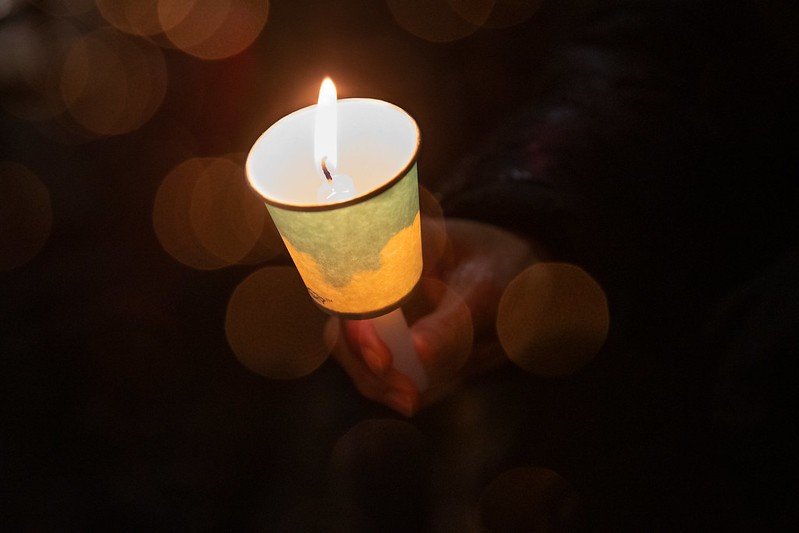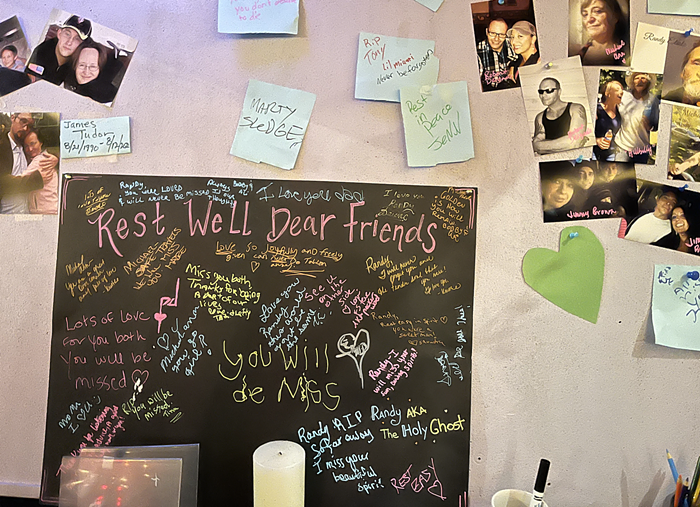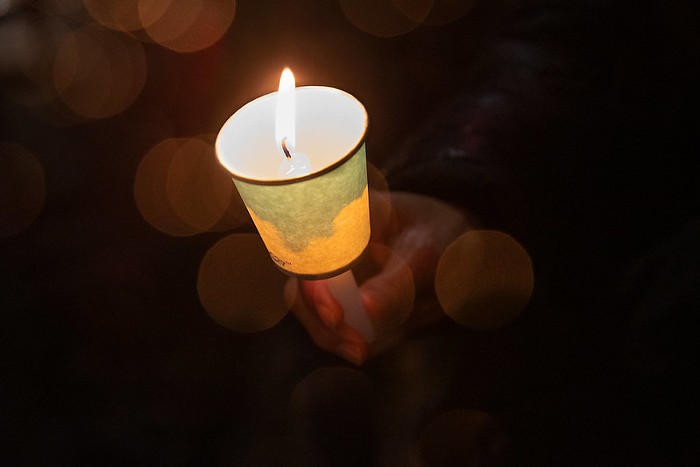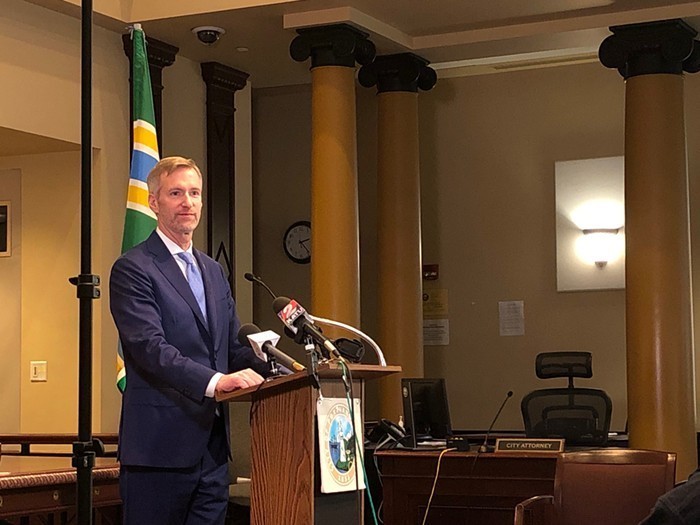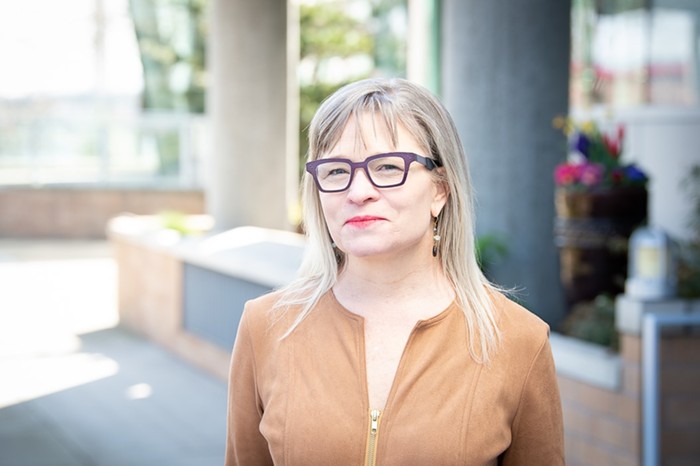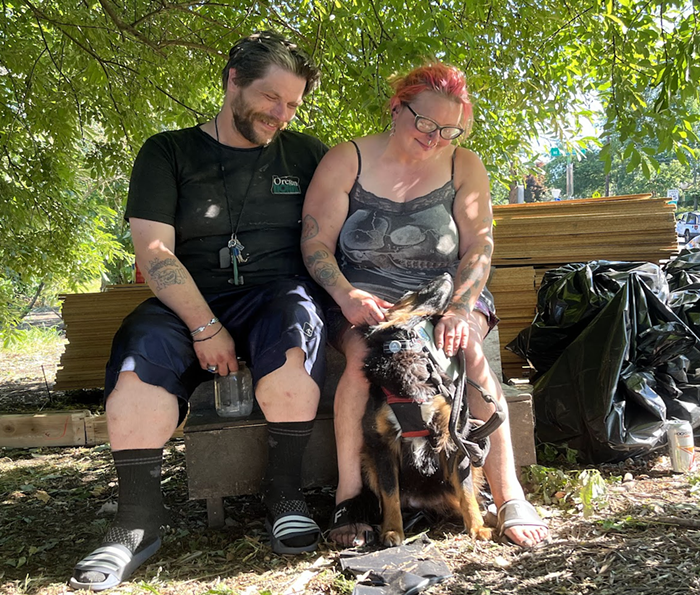At least 193 people who died in Multnomah County in 2021 were homeless at the time of their death, the highest number of houseless deaths ever recorded in a single year in Multnomah County. The county’s annual Domicile Unknown report, released Wednesday, found that nearly 80 percent of those deaths were not due to natural causes.
“These numbers, while not surprising, are still incredibly heartbreaking to me,” Haven Wheelock, the Drug Users Health Services Program Supervisor at the health services organization Outside In, said during a press conference Wednesday.
The Domicile Unknown report, compiled by county officials working directly with the county medical examiner’s office and members of the city’s unhoused population and their families, sheds light on the challenges unhoused county residents are facing. The name of the report refers to the phrase “domicile unknown” on the death certificates of people who do not have a known fixed address at the time of their death.
While the total number of deaths of houseless people in Multnomah County in 2021 eclipsed previous records of 126 and 113 deaths set in 2020 and 2019 respectively, the proportion of houseless deaths investigated by the county’s medical examiner remained steady at around ten percent—suggesting that the rise in the total number of deaths may be attributable in part to an ongoing rise in the region’s houseless population.
According to Multnomah County’s most recent data, 5,228 people were experiencing homelessness in the county on the night of January 26, 2022—an increase of more than 1,000 people since the previous population count in 2019. Of the group of people experiencing homelessness in 2022, one in four people said the pandemic directly contributed to their homelessness.
But the pandemic was not the only crisis the county’s houseless population faced in recent years. Fentanyl, a synthetic opioid up to 50 times stronger than heroin, was a primary or contributing factor in the deaths of 36 houseless people in 2021—a significant increase from the four deaths it caused or contributed to the year before. County health officials initially thought fentanyl would mainly be used as an additive to other drugs, but have since seen that fentanyl is now commonly used by itself because of its potency and widespread availability.
“I don’t think anyone was really prepared for how quickly and sustained the changes in our drug supply have been,” Wheelock said. “I’ve been doing work with this community for nearly two decades, and I’ve never, ever seen our drug supply change and the way people are using substances change as quickly as we’ve seen in the last few years.”
Trevor Fletcher, a vivacious 18-year-old who his mother Jill Whittaker said “always defended the underdog,” was one of the 36 unhoused people who died of a fentanyl overdose in 2021. Fletcher bounced between his parents’ homes, a girlfriend’s place, and other short-term housing for years, while his mother struggled to find available treatment options. Treatment options were either too expensive or Fletcher's case wasn't severe enough to warrant immediate treatment.
“We called so many different places,” Whittaker said in the report. “Either they wanted $10,000 or he has to say he’s going to kill himself. The healthcare system fails so many people.”
In late June 2021, Fletcher’s mother found a treatment center in Washington that offered payment on a sliding scale, but it would be a couple weeks before a bed opened up. Fletcher died of an overdose days later while waiting for treatment to become available.
While fentanyl use remains a serious danger to the county’s houseless population, the effects of overdoses can be reduced or reversed with medication like naloxone—and the Oregon Legislature is currently considering several bills to increase access to it. But there is no similar medication for methamphetamine overdoses, with meth contributing to 93 deaths in 2021 and more than 80 percent of the deaths involving substance use.
“There’s no obvious strategy for something like… meth,” Tri-county Health Officer Jennifer Vines said. “It’s a much more complicated issue to think about in terms of drawing people into some kind of recovery program.”
The spike in drug overdose deaths in the region’s homeless population is reflective of a broader trend. Drug overdose deaths more than doubled in Oregon overall between 2019 and 2021. Wheelock said there is no evidence that the passage of Measure 110, which decriminalized personal possession of controlled substances, has had any impact on the substance use landscape in the county or its drug supply and that other major West Coast cities that have not decriminalized possession like Seattle and San Francisco have experienced similar trends on both fronts.
Portland’s rising homicide rate was also reflected in fatalities in the region’s homeless population, with the number of houseless people who died by homicide rising from eight people in 2020 to 18 in 2021.
“They mirror larger county trends in terms of violent deaths and overdose,” Vines said. “I think what’s particularly difficult about this report is that we see those trends concentrated among our most vulnerable—people who literally don’t have shelter experiencing some of the worst, cascading social effects of the pandemic.”
Kimberly DiLeo, the county’s chief medicolegal death investigator, said that her office has experienced a total increase in casework of 35 percent since 2019. The deaths counted in the Domicile Unknown report only includes deaths brought before the medical examiner, and not all deaths of unhoused people.
The report also identifies climate change as an ongoing threat to residents who don’t have stable access to shelter. The heat dome that saw temperatures in the city soar as high as 116 degrees in June 2021 was responsible for the deaths of 72 people in Multnomah County. Four of those people were houseless.
But despite the record heat, cold temperatures were even more deadly for the region's homeless population in 2021. Hypothermia contributed to eight deaths, up from three deaths in 2020.
Vines said that those deaths are all medically classified as “climate change exposure.”
“Not all of those deaths occurred during county-declared severe weather emergencies, so it’s just another signal that people need to be housed,” Vines said. “People simply should not be living outdoors.”
The Domicile Unknown report was released just a day after Portland Commissioner Rene Gonzalez announced the suspension of tent and tarp distribution by the public safety bureaus he manages, citing risks of tents catching on fire. As Portland braces for a series of overnight temperatures in the low 30s, Gonzalez told unhoused Portlanders to seek shelter in public warming centers. Emergency warming shelters are not currently open in Multnomah County and there are approximately 2,000 overnight shelter beds available for the more than 5,000 homeless residents in the region.
“I am taking immediate action to save lives and protect Portlanders from life-shattering injuries,” Gonzalez said in a press release.
Work is well underway on the 2022 Domicile Unknown report, which is slated to be released in roughly a year’s time. In the meantime, Wheelock said that organizations like Outside In are partnering with public health and governmental organizations to distribute more naloxone into the community as well as provide more treatment options and peer support for those looking to treat addiction.
“I don’t want to take away from how hard and heavy this data is, because these are people and these are people who have families, who have communities, who have friends.” Wheelock said. “[But] I am still going to hold out hope that we are making changes and moving forward in a way that provides better so that people aren’t dying in their 40s from things that can be prevented.”
